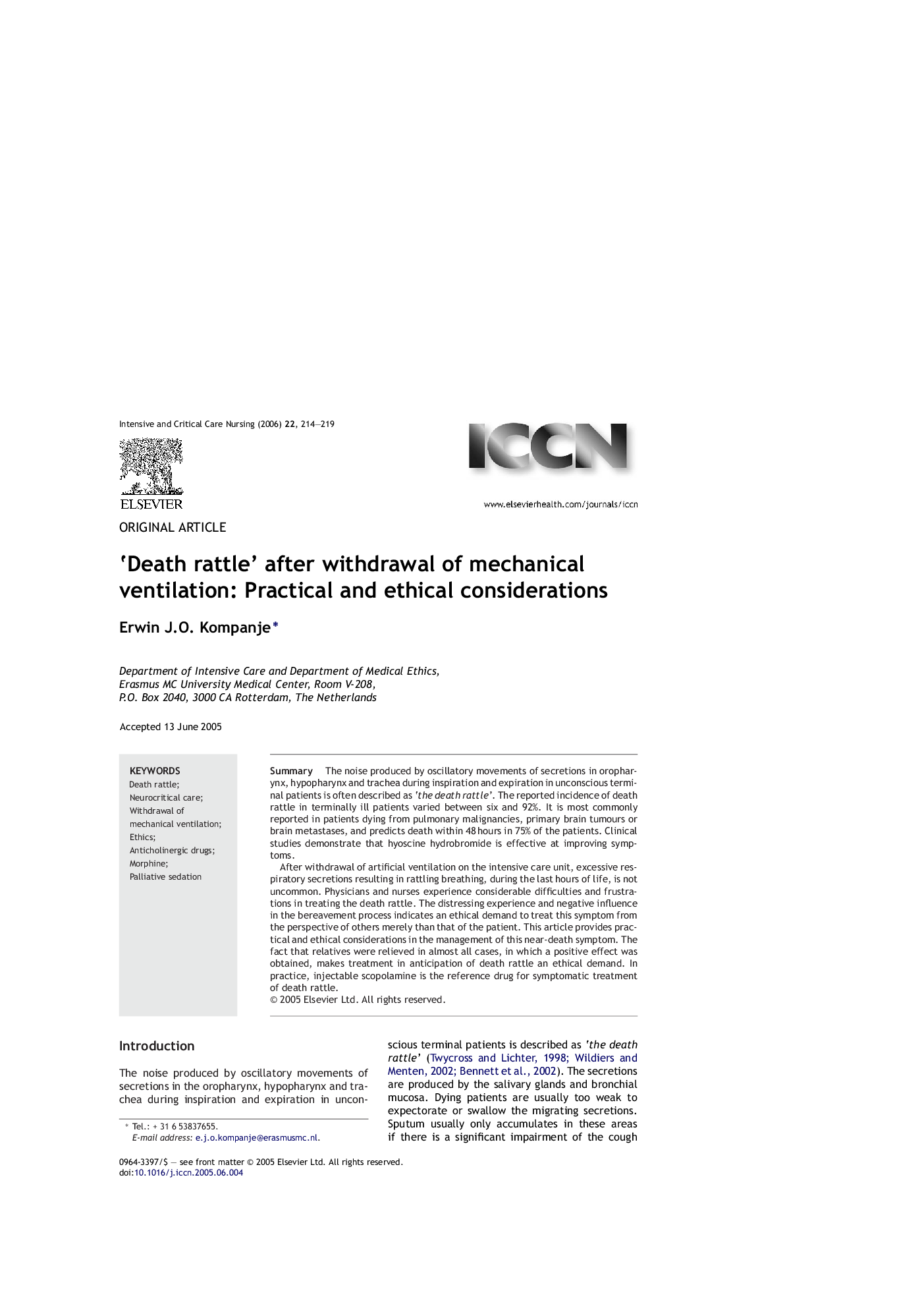| کد مقاله | کد نشریه | سال انتشار | مقاله انگلیسی | نسخه تمام متن |
|---|---|---|---|---|
| 2652345 | 1139628 | 2006 | 6 صفحه PDF | دانلود رایگان |

SummaryThe noise produced by oscillatory movements of secretions in oropharynx, hypopharynx and trachea during inspiration and expiration in unconscious terminal patients is often described as ‘the death rattle’. The reported incidence of death rattle in terminally ill patients varied between six and 92%. It is most commonly reported in patients dying from pulmonary malignancies, primary brain tumours or brain metastases, and predicts death within 48 hours in 75% of the patients. Clinical studies demonstrate that hyoscine hydrobromide is effective at improving symptoms.After withdrawal of artificial ventilation on the intensive care unit, excessive respiratory secretions resulting in rattling breathing, during the last hours of life, is not uncommon. Physicians and nurses experience considerable difficulties and frustrations in treating the death rattle. The distressing experience and negative influence in the bereavement process indicates an ethical demand to treat this symptom from the perspective of others merely than that of the patient. This article provides practical and ethical considerations in the management of this near-death symptom. The fact that relatives were relieved in almost all cases, in which a positive effect was obtained, makes treatment in anticipation of death rattle an ethical demand. In practice, injectable scopolamine is the reference drug for symptomatic treatment of death rattle.
Journal: Intensive and Critical Care Nursing - Volume 22, Issue 4, August 2006, Pages 214–219